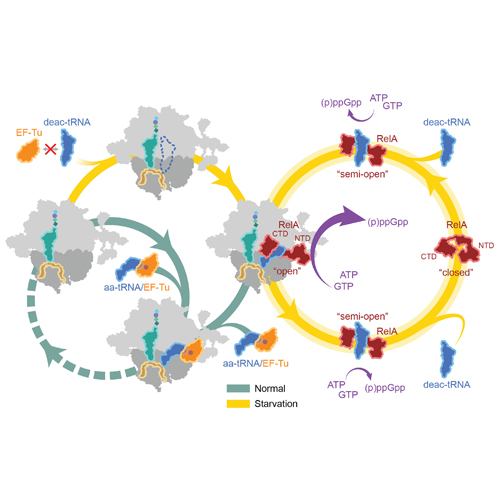The stringent factor RelA adopts an open conformation on the ribosome to stimulate ppGpp synthesis
25-May-2016
Nucleic Acids Research,1, doi: 10.1093/nar/gkw470
Nucleic Acids Research, online article
Under stress conditions, such as nutrient starvation, deacylated tRNAs bound within the ribosomal A-site are recognized by the stringent factor RelA, which converts ATP and GTP/GDP to (p)ppGpp. The signaling molecules (p)ppGpp globally rewire the cellular transcriptional program and general metabolism, leading to stress adaptation. Despite the additional importance of the stringent response for regulation of bacterial virulence, antibiotic resistance and persistence, structural insight into how the ribosome and deacylated-tRNA stimulate RelA-mediated (p)ppGpp has been lacking. Here, we present a cryo- EM structure of RelA in complex with the Escherichia coli 70S ribosome with an average resolution of 3.7 °A and local resolution of 4 to >10 °A for RelA. The structure reveals that RelA adopts a unique ‘open’ conformation, where the C-terminal domain (CTD) is intertwined around an A/T-like tRNA within the intersubunit cavity of the ribosome and the N-terminal domain (NTD) extends into the solvent. We propose that the open conformation of RelA on the ribosome relieves the autoinhibitory effect of the CTD on the NTD, thus leading to stimulation of (p)ppGpp synthesis by RelA.











